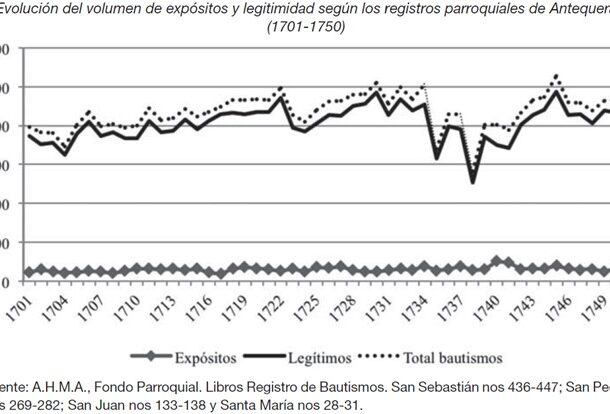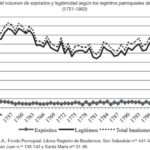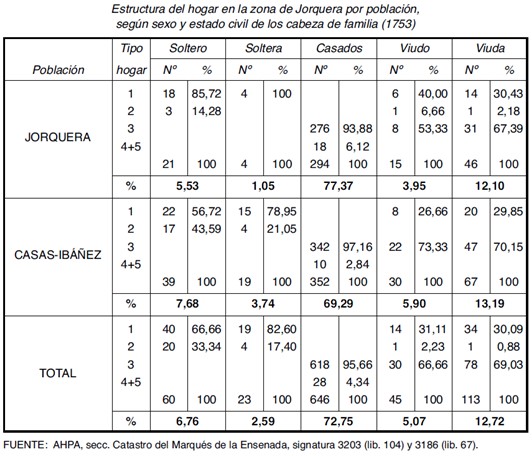
The author reflects in the resource the evolution of foundlings throughout the second half of the 18th century. In these 50 years, the number of total baptisms showed a decreasing trend compared to the first half of the century, although the rate of foundlings fell to an annual average of 51. It was in this period at the end of the Ancien Régime when the trends of previous decades were reversed. From the 17th century onwards, it could be seen that the rates of foundlings were inversely related to the number of baptised children; from this time onwards, lower birth rates coincided with a low level of abandonments. Thus, in 1751, the year with the lowest baptismal registers, the number of foundlings was 7%, in contrast with other years of higher birth rates (in 1788 the abandonment rate was 10% and in 1802 it was 8%).
Collection: Graphics
Project: 3. Rural world and urban world in the formation of the European identity., 4. Family, daily life and social inequality in Europe.
Chronology: XVIII
Scope: Secondary Education, Baccalaureate, University
Resource type: Graph
Format: Line chart
Source: León Vegas, M. (2015). "Un estudio de caso sobre abandono infantil en la Andalucía Moderna: los expósitos de la inclusa antequerana", en Revista de Demografía Histórica, XXXIII, 1, p. 123.
Language: Spanish
Date: 2015
Owner: Pablo Ballesta Fernández (Modernalia)
Copyright: ©Revista de Demografía Histórica ©Milagros León Vegas
Abstract: Graph showing the total number of births, legitimate children and foundlings according to the parish registers of Antequera
Image
Tags







